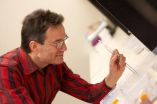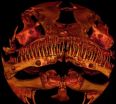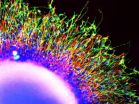(Press-News.org) The diversity of the world's life forms — from corals to carnivores — is under assault. Decades of scientific studies document the fraying of ecosystems and a grim tally of species extinctions due to destroyed habitat, pollution, climate change, invasives and overharvesting.
Which makes a recent report in the journal Science rather surprising.
Nick Gotelli, a professor at the University of Vermont, with colleagues from Saint Andrews University, Scotland, and the University of Maine, re-examined data from one hundred long-term monitoring studies done around the world — polar regions to the tropics, in the oceans and on land. They discovered that the number of species in many of these places has not changed much — or has actually increased.
Now wait a minute. A global extinction crisis should show up in declining levels of local biodiversity, right? That's not what the scientists found. Instead they discovered that, on average, the number of species recorded remained the same over time. Fifty-nine of the one hundred biological communities showed an increase in species richness and 41 a decrease. In all the studies, the rate of change was modest.
But the researchers did discover something changing rapidly: which species were living in the places being studied. Almost 80 percent of the communities the team examined showed substantial changes in species composition, averaging about 10 percent change per decade — significantly higher than the rate of change predicted by models.
In other words, this new report shows that a huge turnover of species in habitats around the globe is under way, resulting in the creation of novel biological communities. "Right under our noses, in the same place that a team might have looked a decade earlier, or even just a year earlier, a new assemblage of plants and animals may be taking hold," Gotelli says.
The causes of this shift are not yet fully clear, but the implications for conservation and policy could be significant. Historically, conservation science and planning has focused on protecting endangered species more than on shifts in which plants and animals are assembled together. "A main policy application of this work is that we're going to need to focus as much on the identity of species as on the number of species," Gotelli says. "The number of species in a place may not be our best scorecard for environmental change."
For example, the scientists write that disturbed coral reefs can be replaced by a group of species dominated by algae. This replacement might keep the species count the same, but not necessarily provide the fisheries, tourism ("algae diving" doesn't have quite the same appeal as "reef diving") or coastal protections that the original coral reef did.
"In the oceans we no longer have many anchovies, but we seem to have an awful lot of jellyfish," says Gotelli. "Those kinds of changes are not going to be seen by just counting the number of species that are present."
The new research, led by Maria Dornelas at Saint Andrews University in Scotland, carefully looked for previous studies that had tracked and tallied species over many years. The team selected 100 that contained six million observations of more than 35,000 different species — including datasets that go back to 1874 and many over the last 40 years. Given widespread observation of habitat change and individual species declines — and knowing that extinction rates are many times higher than normal — the scientists predicted a drop, over time, in the number of species observed in most of these studies.
Why they didn't find this drop could be driven by many forces. One is related to what science writer David Quammen semi-famously termed our "planet of weeds." In other words, invasive species or successful colonists or weedy generalists — think kudzu and rats — may be spreading into new places, keeping the local species tally up, even as the planet's overall biodiversity is degraded.
"We move species around," Gotelli says. "There is a huge ant diversity in Florida, and about 30 percent of the ant species are non-natives. They have been accidentally introduced, mostly from the Old World tropics, and they are now a part of the local assemblage. So you can have increased diversity in local communities because of global homogenization."
And sampling issues may conceal important realities: some species may have become so rare — think white rhinos — that they're highly unlikely to be found in a general species survey and so don't show in the initial results nor disappear in later ones.
Range shifts associated with climate change could be at work, too, quickly pushing species into new terrain. On May 6, the White House released its National Climate Assessment noting that, as a result of human-caused warming, "species, including many iconic species, may disappear from regions where they have been prevalent or become extinct, altering some regions so much that their mix of plant and animal life will become almost unrecognizable."
This study in Science,"Assemblage Time Series Reveal Biodiversity Change Systematic Loss," published on April 18, underlines this emerging reality, giving it a new and worrisome precision and leading Nick Gotelli and his co-authors to conclude that there "is need to expand the focus of research and planning from biodiversity loss to biodiversity change."
INFORMATION:
Surprising global species shake-up discovered
2014-05-13
ELSE PRESS RELEASES FROM THIS DATE:
Cancer stem cells under the microscope at Albert Einstein College of Medicine symposium
2014-05-13
May 13, 2014 – (BRONX, NY) – Healthy stem cells work to restore or repair the body's tissues, but cancer stem cells have a more nefarious mission: to spawn malignant tumors. Cancer stem cells were discovered a decade ago, but their origins and identity remain largely unknown.
Today, the Ruth L. and David S. Gottesman Institute for Stem Cell and Regenerative Medicine Research at Albert Einstein College of Medicine of Yeshiva University hosted its second Stem Cell Symposium, focusing on cancer stem cells. Leading scientists from the U.S., Canada and Belgium discussed ...
Algorithm enables computers to identify actions much more efficiently
2014-05-13
With the commodification of digital cameras, digital video has become so easy to produce that human beings can have trouble keeping up with it. Among the tools that computer scientists are developing to make the profusion of video more useful are algorithms for activity recognition — or determining what the people on camera are doing when.
At the Conference on Computer Vision and Pattern Recognition in June, Hamed Pirsiavash, a postdoc at MIT, and his former thesis advisor, Deva Ramanan of the University of California at Irvine, will present a new activity-recognition ...
Mayo Clinic study identifies strategies that reduce early hospital readmissions
2014-05-13
ROCHESTER, Minn. — May 13, 2014 — A Mayo Clinic review of 47 studies found that 30-day readmissions can be reduced by almost 20 percent when specific efforts are taken to prevent them. Key among these are interventions to help patients deal with the work passed on to them at discharge. The results of the review are published in this week's issue of JAMA Internal Medicine.
"Reducing early hospital readmissions is a policy priority aimed at improving quality of care and lowering costs," says Aaron Leppin, M.D., a research associate in Mayo Clinic's Knowledge and Evaluation ...
Novel protein fragments may protect against Alzheimer's
2014-05-13
The devastating loss of memory and consciousness in Alzheimer's disease is caused by plaque accumulations and tangles in neurons, which kill brain cells. Alzheimer's research has centered on trying to understand the pathology as well as the potential protective or regenerative properties of brain cells as an avenue for treating the widespread disease.
Now Prof. Illana Gozes, the incumbent of the Lily and Avraham Gildor Chair for the Investigation of Growth Factors and director of the Adams Super Center for Brain Studies at the Sackler Faculty of Medicine and a member ...
A tiny, toothy catfish with bulldog snout defies classification
2014-05-13
PHILADELPHIA (May 13, 2014)— Kryptoglanis shajii is a strange fish – and the closer scientists look, the stranger it gets. This small subterranean catfish sees the light of day and human observers only rarely, when it turns up in springs, wells and flooded rice paddies in the Western Ghats mountain region of Kerala, India. It was first described as a new species in 2011.
Soon after that, John Lundberg, PhD, one of the world's leading authorities on catfishes, started taking a closer look at several specimens.
"The more we looked at the skeleton, the stranger it got," ...
UTMB study discovers cause of many preterm births
2014-05-13
A new study by researchers at the University of Texas Medical Branch at Galveston is the first to show that premature aging of the placenta due to oxidative stress is the cause of many preterm births. The study appears today in the American Journal of Pathology.
Researchers took fetal membranes, exposed them to oxidative stress in a lab setting (specifically cigarette smoke extract) and examined whether it caused rapid aging of the placental tissue. It did.
Oxidative stress factors include environmental toxins and pollution and are an inevitable component of normal ...
TB lung infection causes changes in the diversity of gut bacteria in mice
2014-05-13
Johns Hopkins researchers have found evidence in mice that a tuberculosis (TB) infection in the lungs triggers immune system signaling to the gut that temporarily decreases the diversity of bacteria in that part of the digestive tract.
The Johns Hopkins researchers showed that this decrease in diversity of gut bacteria as measured in fecal samples happened quickly — within six days after mice were exposed to an aerosol mixture of M. tuberculosis, the TB bacteria. This prompt shift in diversity, they say, suggests that the immune system is attacking the gut bacteria, decreasing ...
Get it over with: People choose more difficult tasks to get jobs done more quickly
2014-05-13
Putting off tasks until later, or procrastination, is a common phenomenon – but new research suggests that "pre-crastination," hurrying to complete a task as soon as possible, may also be common.
The research, published in Psychological Science, a journal of the Association for Psychological Science, suggests that people often opt to begin a task as soon as possible just to get it off their plate, even if they have to expend more physical effort to do so.
"Most of us feel stressed about all the things we need to do – we have to-do lists, not just on slips of paper ...
Coral reefs are critical for risk reduction & adaptation
2014-05-13
ARLINGTON, Va — Stronger storms, rising seas, and flooding are placing hundreds of millions people at risk around the world, and big part of the solution to decrease those risks is just off shore. A new study finds that coral reefs reduce the wave energy that would otherwise impact coastlines by 97 percent.
"Coral reefs serve as an effective first line of defense to incoming waves, storms and rising seas," said Dr. Michael Beck, lead marine scientist of The Nature Conservancy and a co-author of the study, "200 million people across more than 80 nations are at risk if ...
New stem cell research points to early indicators of schizophrenia
2014-05-13
LA JOLLA—Using new stem cell technology, scientists at the Salk Institute have shown that neurons generated from the skin cells of people with schizophrenia behave strangely in early developmental stages, providing a hint as to ways to detect and potentially treat the disease early.
The findings of the study, published online in April's Molecular Psychiatry, support the theory that the neurological dysfunction that eventually causes schizophrenia may begin in the brains of babies still in the womb.
"This study aims to investigate the earliest detectable changes in the ...


